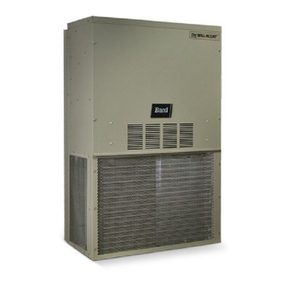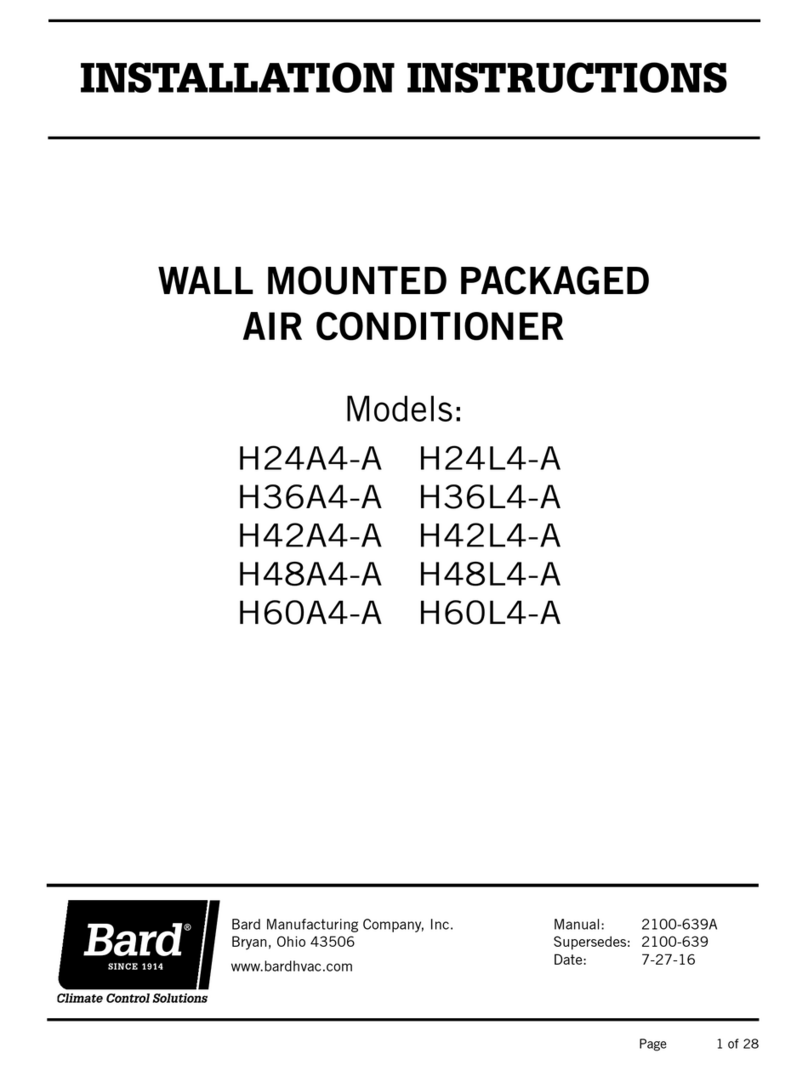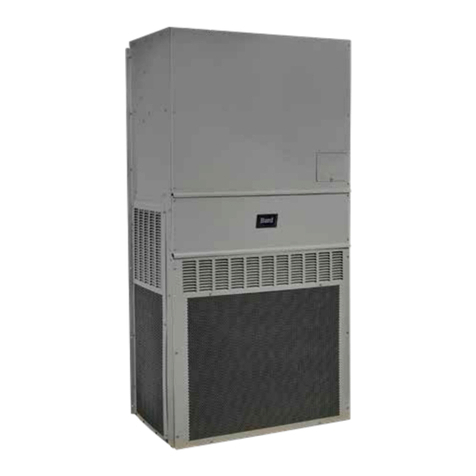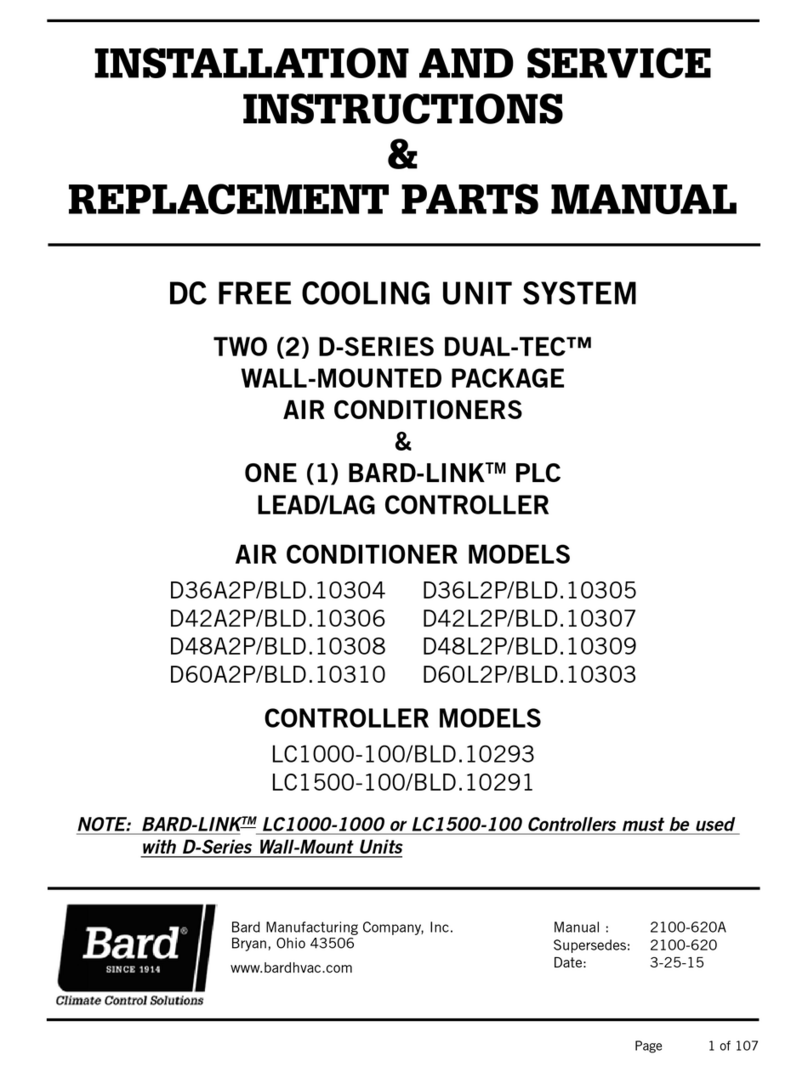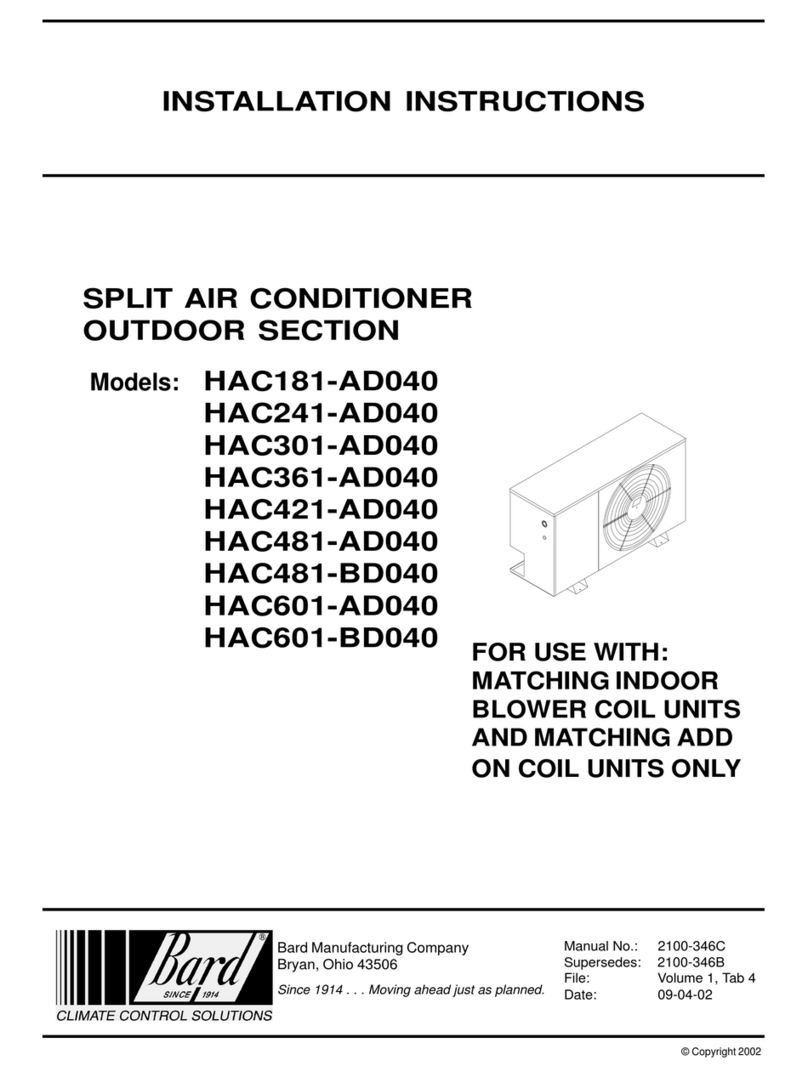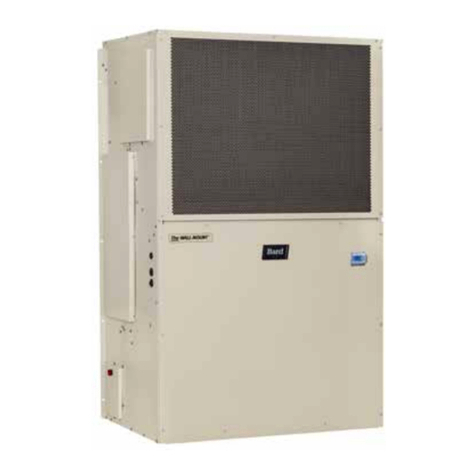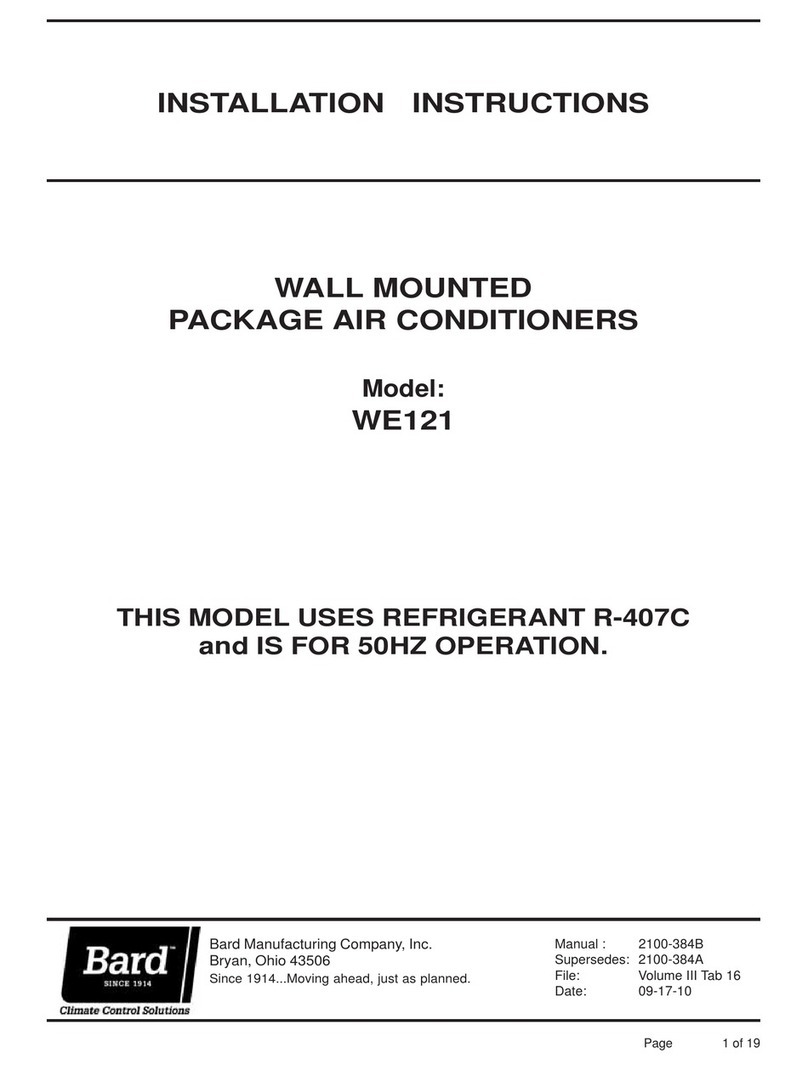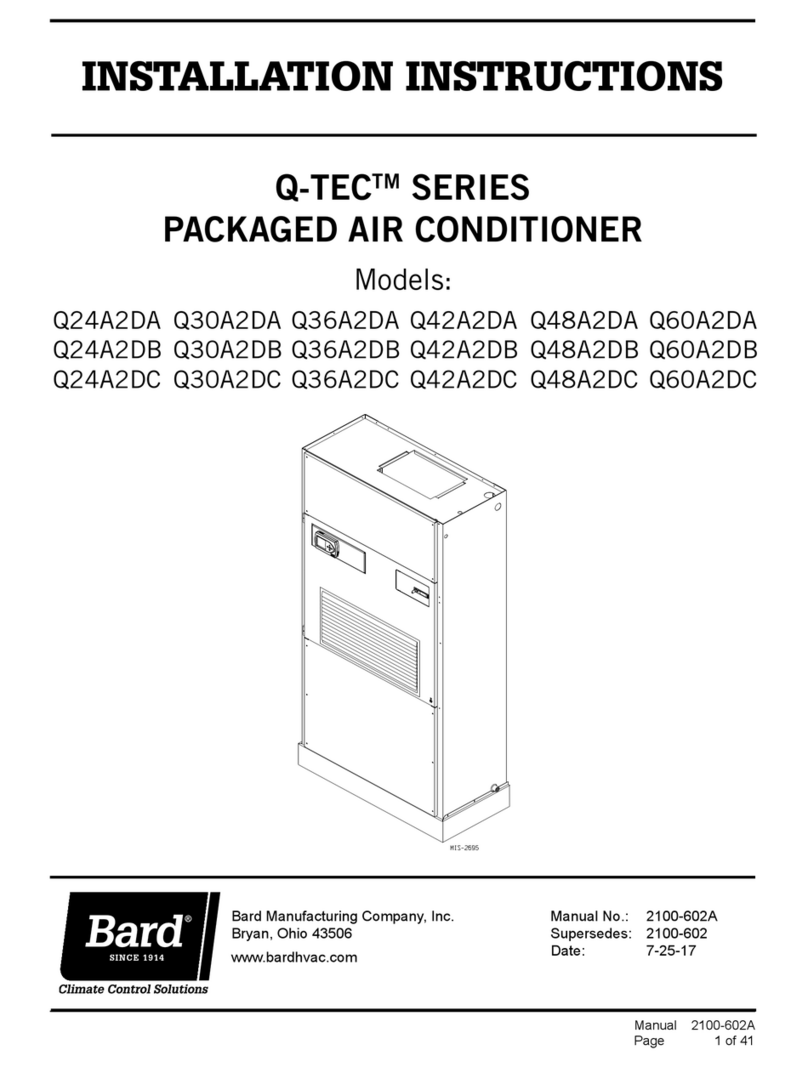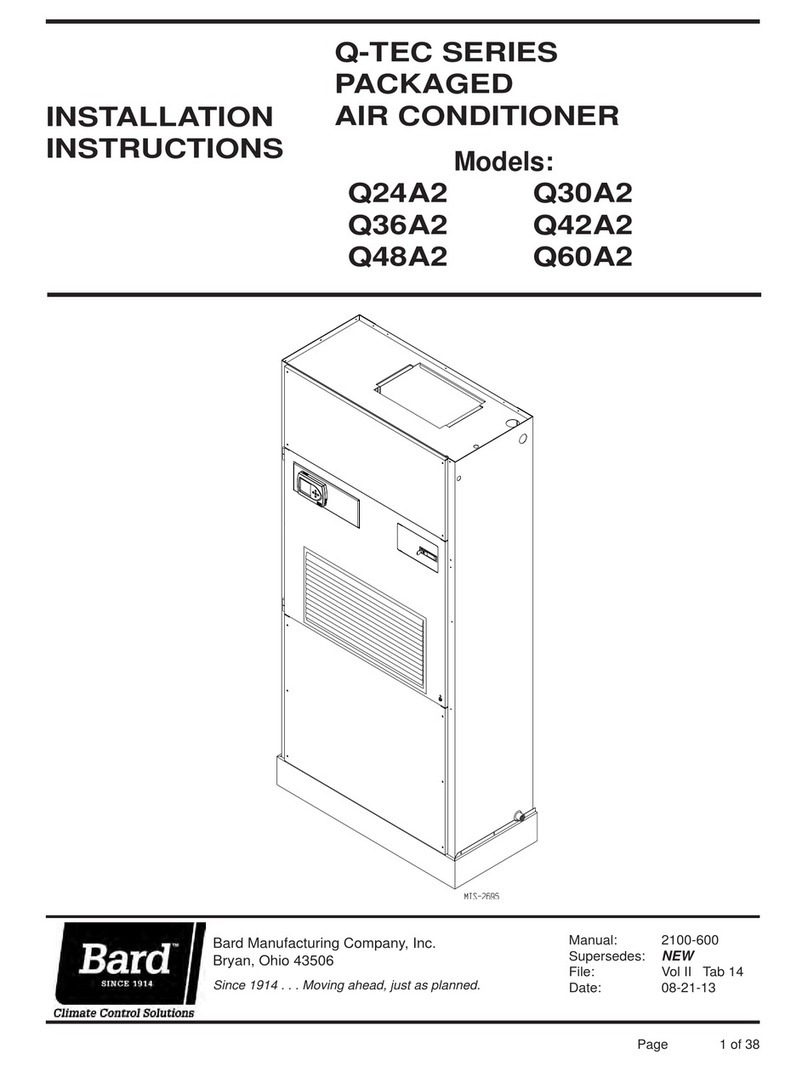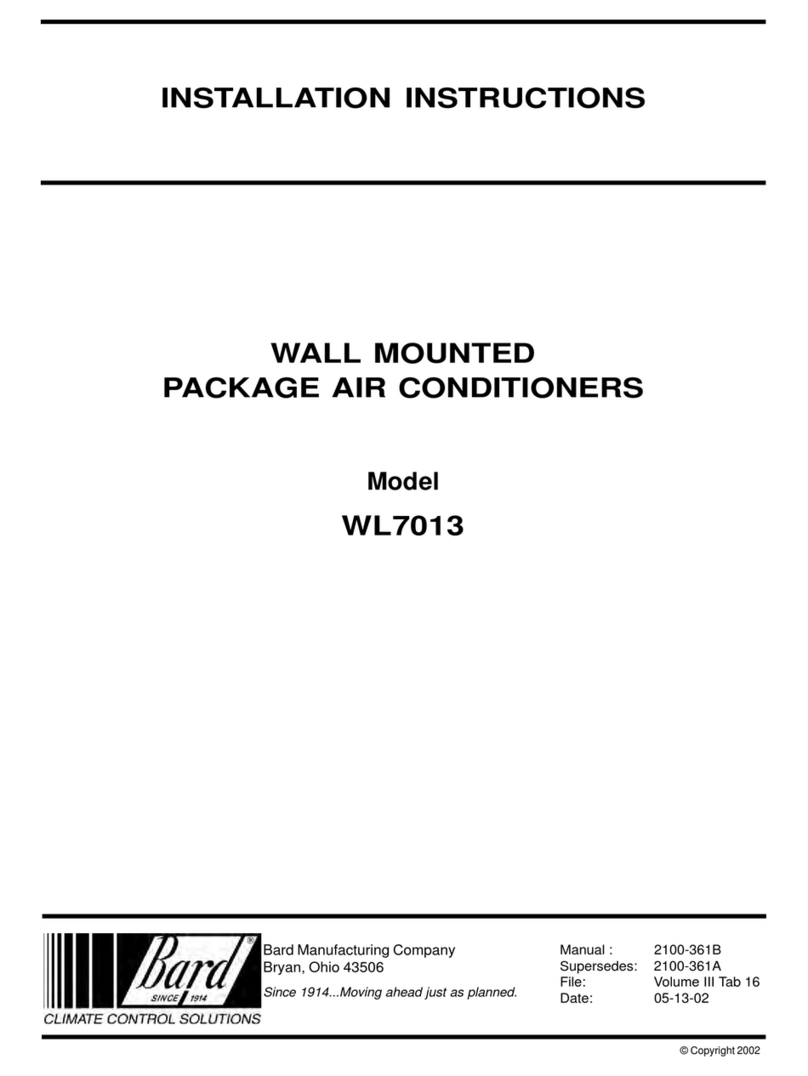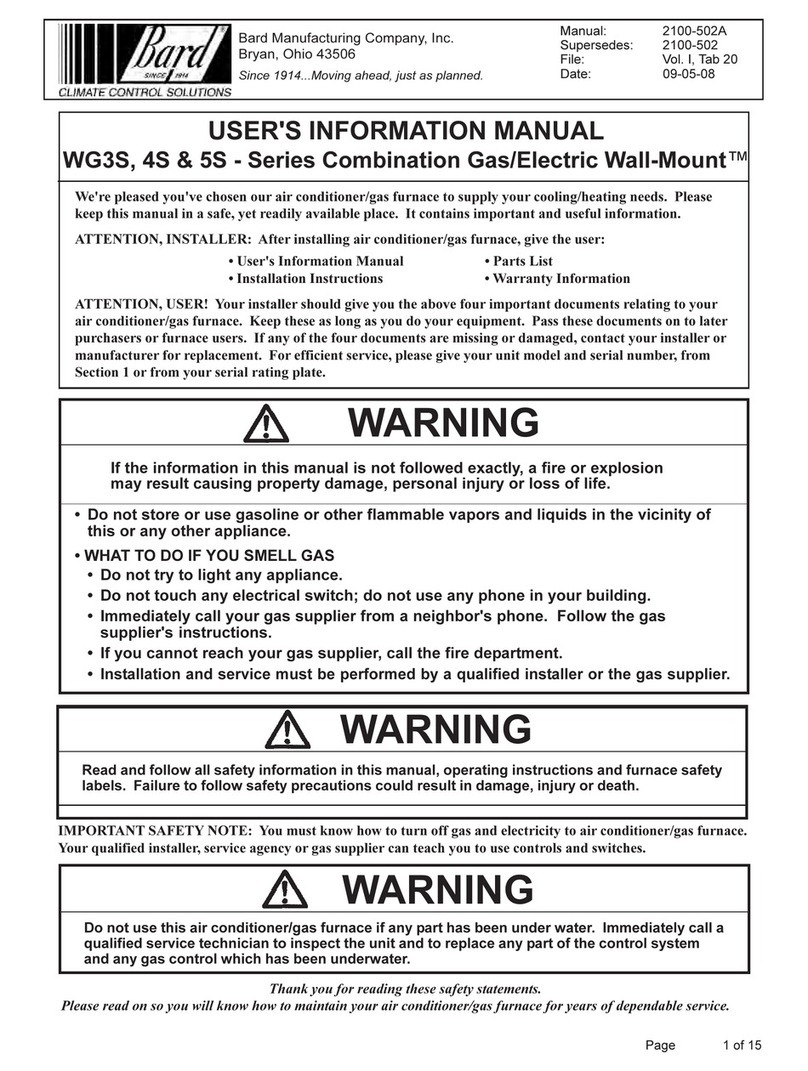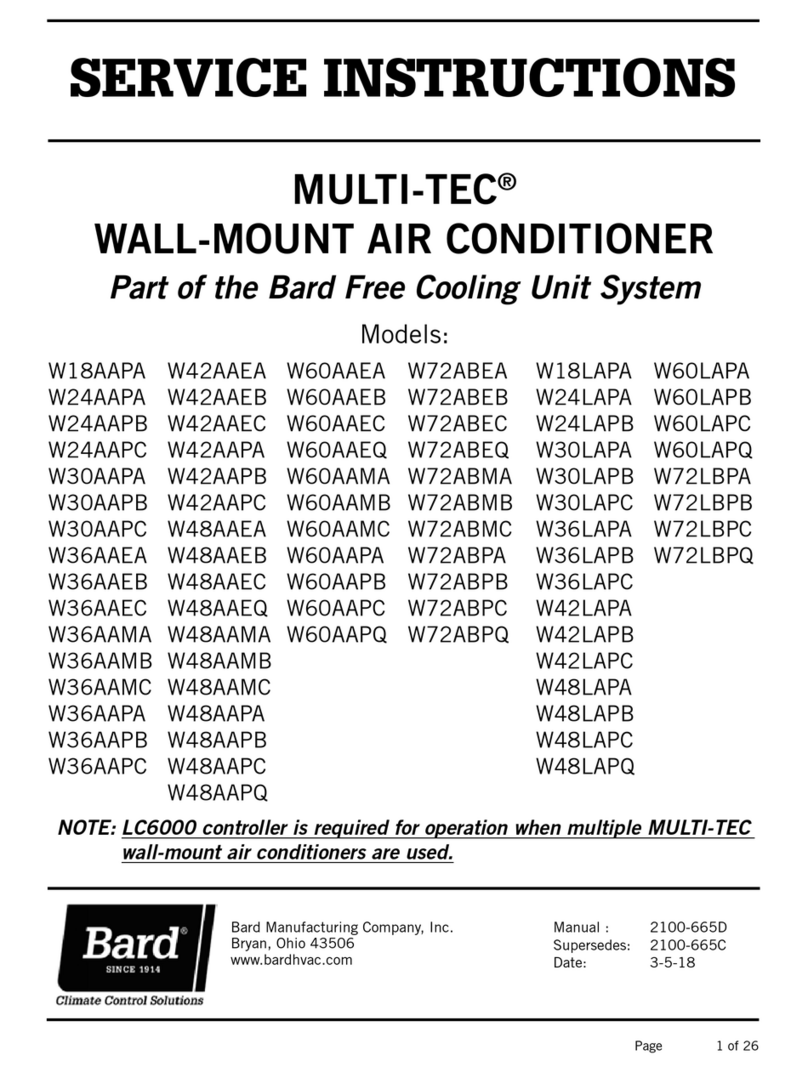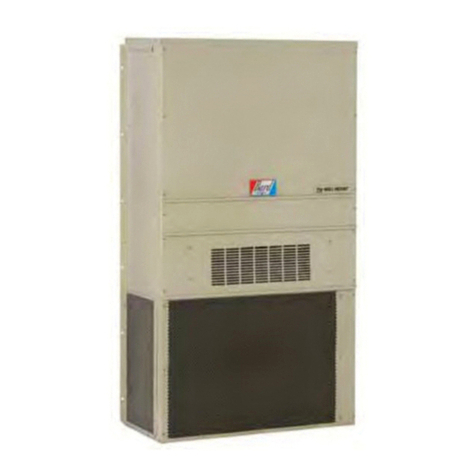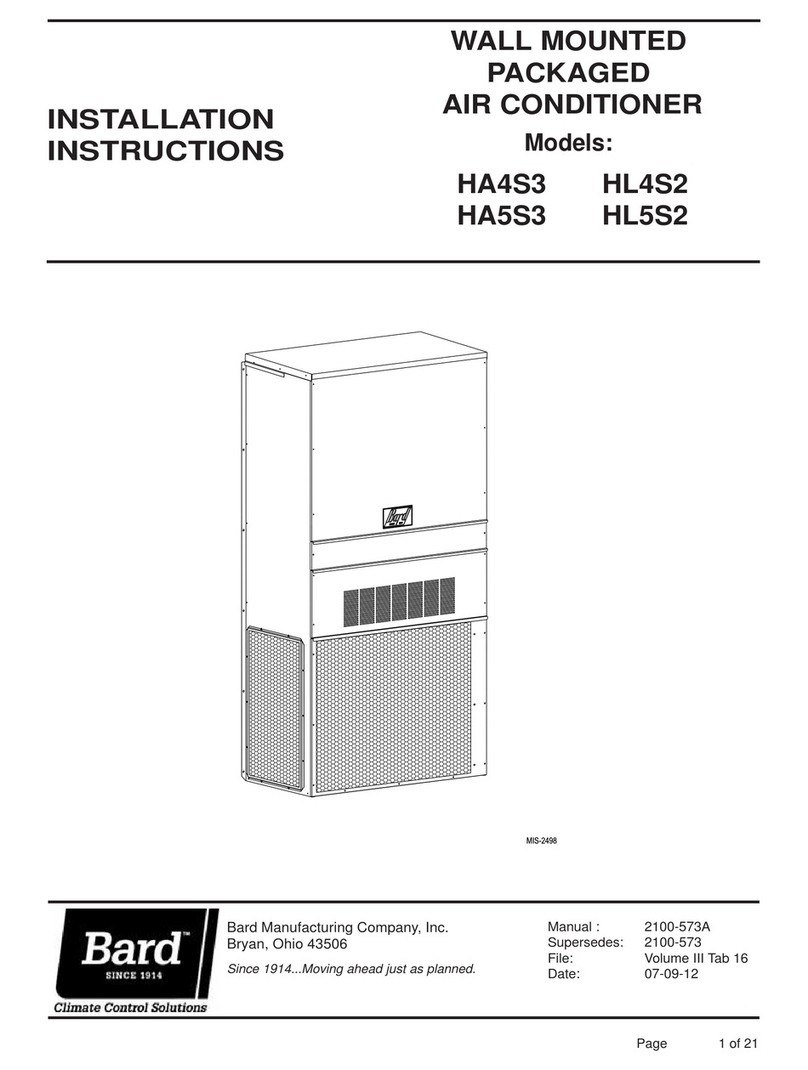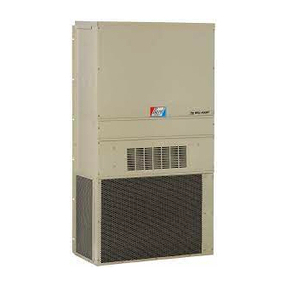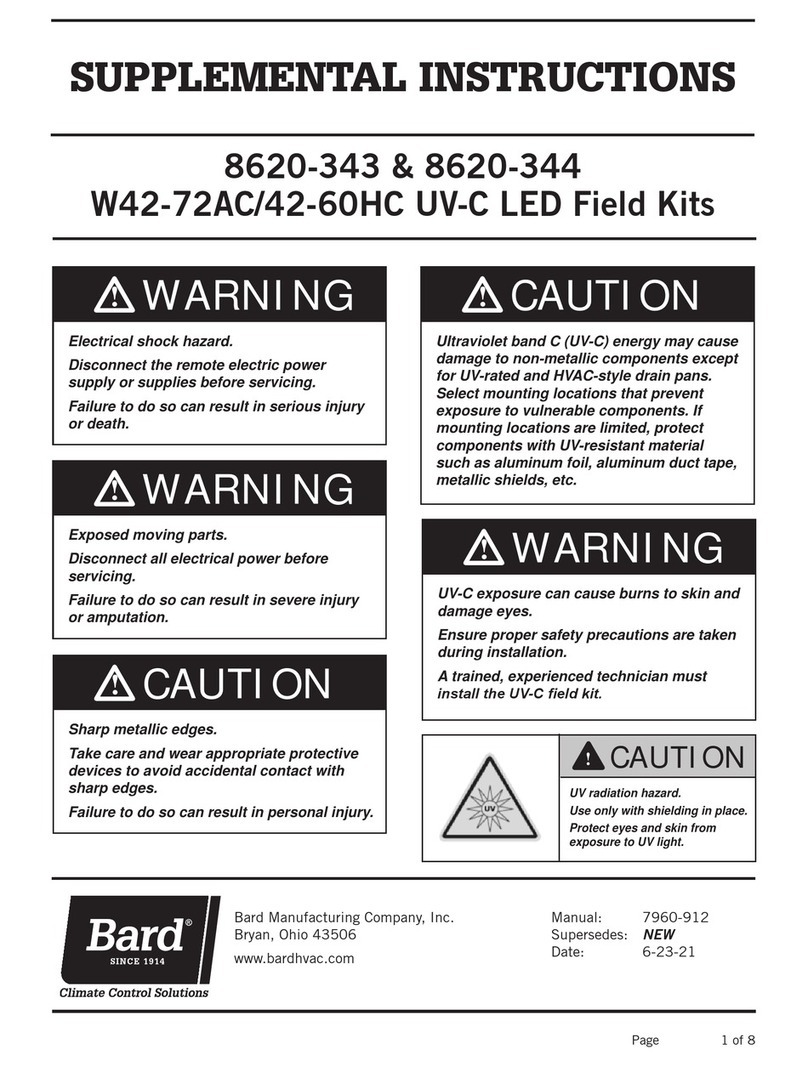
Manual 2100-428A
Page 6 of 18
SHIPPING DAMAGE
Upon receipt of equipment, the carton should be
checked for external signs of shipping damage. If
damage is found, the receiving party must contact the
last carrier immediately, preferably in writing,
requesting inspection by the carrier’s agent.
GENERAL
The equipment covered in this manual is to be installed
by trained, experienced service and installation
technicians.
The refrigerant system is completely assembled and
charged. All internal wiring is complete.
The unit is designed for use with or without duct work.
Flanges are provided for attaching the supply and return
ducts.
These instructions explain the recommended method to
install the air cooled self-contained unit and the
electrical wiring connections to the unit.
While these instructions are intended as a general
recommended guide, they do not supersede any national
and/or local codes in any way. Authorities having
jurisdiction should be consulted before the installation is
made. See Page 3 for information on codes and
standards.
1Maximum size of the time delay fuse or HACR type circuit breaker for protection of field wiring conductors.
2Based on 75° C copper wire. All Wiring must conform to NEC and all local codes.
3These “minimum Circuit Ampacity” values are to be used for sizing the field power conductors. Refer to the
National Electric Code (latest revision), article 310 for power conductor sizing.
CAUTION: When more than one field power conductor circuit is run through one conduit, the conductors
must be derated. Pay special attention to note 8 of table 310 regarding Ampacity Adjustment
Factors when more than 3 conductors are in a raceway.
TABLE 2
ELECTRICALSPECIFICATIONS
ledoM
TIUCRICELGNIS
detaR &stloV esahP
.oN dleiF rewoP stiucriC
3
muminiM tiucriC yticapmA
1
mumixaM lanretxE roesuF .tkC rekaerB
2
dleiF rewoP eriW eziS
2
dnuorG eriW eziS
Z0A3207LW 01A 1-802/032 1
18495 0606 8
60101
Z0B3107LW 90B 3-802/032 1
16363 0505 8
80101
Size of unit for a proposed installation should be based
on heat loss calculation made according to methods of
Air Conditioning Contractors of America (ACCA). The
air duct should be installed in accordance with the
Standards of the National Fire Protection Association
for the Installation of Air Conditioning and Ventilating
Systems of Other Than Residence Type, NFPA No.
90A, and Residence Type Warm Air Heating and Air
Conditioning Systems, NFPA No. 90B. Where local
regulations are at a variance with instructions, installer
should adhere to local codes.
DUCT WORK
All duct work, supply and return, must be properly sized
for the design airflow requirement of the equipment.
Air Conditioning Contractors of America (ACCA) is an
excellent guide to proper sizing. All duct work or
portions thereof not in the conditioned space should be
properly insulated in order to both conserve energy and
prevent condensation or moisture damage.
These instructions and any instructions packaged with
any separate equipment, required to make up the entire
air conditioning system should be carefully read before
beginning the installation. Note particularly any tags
and/or labels attached to the equipment.
